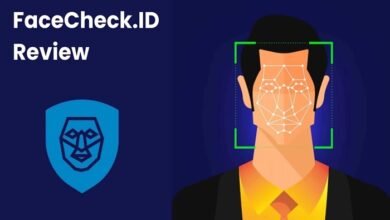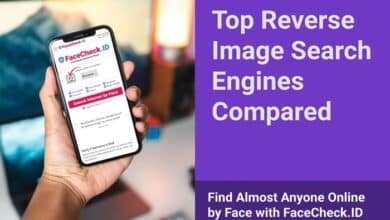Facecheck-ID: Revolutionizing Identity Verification in the Digital Age

Introduction
In an era where digital interactions dominate, verifying identity has become a critical challenge. Enter Facecheck-ID, a cutting-edge solution leveraging facial recognition technology to streamline identity verification processes. Whether it’s for online banking, e-commerce, or access control, Facecheck-ID is setting new standards for security and user convenience. This blog post explores how Facecheck-ID works, its applications, benefits, and its role in shaping the future of digital identity verification.
How Facecheck-ID Works: The Technology Behind the Innovation
At its core, Facecheck-ID utilizes advanced facial recognition algorithms to verify a user’s identity in real-time. The process begins with capturing a live image or video of the user’s face. This data is then compared against a pre-registered image or database using machine learning models that analyze unique facial features such as the distance between the eyes, jawline shape, and other biometric markers.
What sets Facecheck-ID apart is its ability to detect spoofing attempts, such as photos or videos of a person, ensuring that only genuine users are verified. The system also incorporates liveness detection, which requires users to perform simple actions like blinking or smiling to confirm their presence. This combination of accuracy and anti-fraud measures makes Facecheck-ID a reliable solution for businesses and individuals alike.
Applications of Facecheck-ID Across Industries
The versatility of Facecheck-ID makes it applicable across a wide range of industries. Here are some key areas where this technology is making an impact:
- Banking and Finance: Facecheck-ID is revolutionizing customer onboarding and transaction authentication. Banks can now verify customers remotely, reducing the need for in-person visits and enhancing security against identity theft.
- E-Commerce: Online retailers are using Facecheck-ID to prevent fraudulent purchases and ensure that only authorized users access accounts.
- Healthcare: Hospitals and clinics are adopting Facecheck-ID to verify patient identities, ensuring accurate medical records and reducing administrative errors.
- Travel and Hospitality: Airports and hotels are leveraging Facecheck-ID for seamless check-ins and enhanced security.
- Workplace Security: Companies are integrating Facecheck-ID into their access control systems to restrict entry to authorized personnel only.
These applications demonstrate how Facecheck-ID is transforming traditional processes into efficient, secure, and user-friendly experiences.
Benefits of Using Facecheck-ID
The adoption of Facecheck-ID offers numerous benefits for both businesses and end-users:
- Enhanced Security: By relying on biometric data, Facecheck-ID provides a higher level of security compared to traditional methods like passwords or PINs, which can be easily compromised.
- Improved User Experience: Facecheck-ID eliminates the need for remembering complex passwords or carrying physical IDs, making the verification process quick and hassle-free.
- Cost Efficiency: Automating identity verification reduces the need for manual checks, saving businesses time and resources.
- Fraud Prevention: The advanced anti-spoofing measures in Facecheck-ID significantly reduce the risk of identity fraud.
- Scalability: Facecheck-ID can handle large volumes of verification requests, making it suitable for businesses of all sizes.
These advantages make Facecheck-ID an indispensable tool in today’s digital landscape.
Addressing Privacy Concerns with Facecheck-ID
While the benefits of Facecheck-ID are undeniable, privacy concerns remain a top priority for users. Facial recognition technology often raises questions about data security and potential misuse. To address these concerns, Facecheck-ID employs robust encryption methods to protect biometric data during transmission and storage. Additionally, the system adheres to strict data protection regulations, such as GDPR, ensuring that user information is handled responsibly.
Transparency is another key aspect of Facecheck-ID’s approach. Users are informed about how their data will be used and have the option to opt-out if they choose. By prioritizing privacy and security, Facecheck-ID builds trust and encourages wider adoption of its technology.
The Future of Facecheck-ID: Trends and Innovations
As technology continues to evolve, so does Facecheck-ID. Future developments may include:
- Integration with AI: Enhanced AI capabilities could improve the accuracy and speed of facial recognition, even in challenging conditions like low light or partial obstructions.
- Wearable Technology: Facecheck-ID could be integrated into smart glasses or AR devices, enabling hands-free identity verification.
- Blockchain Integration: Storing biometric data on a blockchain could further enhance security and transparency.
- Global Adoption: As more countries embrace digital identity systems, Facecheck-ID could become a universal standard for identity verification.
These innovations promise to make Facecheck-ID even more versatile and impactful in the years to come.
Challenges and Limitations of Facecheck-ID
Despite its many advantages, Facecheck-ID is not without challenges. One major limitation is the potential for bias in facial recognition algorithms, which may struggle to accurately verify individuals from diverse ethnic backgrounds. To address this, developers are continuously refining their models to ensure fairness and inclusivity.
Another challenge is the reliance on high-quality images or videos for verification. Poor lighting or low-resolution cameras can affect the accuracy of the system. Additionally, concerns about surveillance and misuse of facial recognition technology remain, highlighting the need for ethical guidelines and regulatory oversight.
Conclusion
Facecheck-ID represents a significant leap forward in identity verification, offering a blend of security, convenience, and innovation. By addressing key challenges and prioritizing user privacy, this technology is poised to become an integral part of our digital lives. As businesses and individuals alike embrace Facecheck-ID, we can look forward to a future where identity verification is seamless, secure, and accessible to all.
FAQs
1. What is Facecheck-ID?
Facecheck-ID is a facial recognition-based identity verification system that uses advanced algorithms to authenticate users in real-time.
2. How secure is Facecheck-ID?
Facecheck-ID employs encryption, liveness detection, and anti-spoofing measures to ensure high levels of security and prevent fraud.
3. Can Facecheck-ID be used for online transactions?
Yes, Facecheck-ID is widely used in e-commerce and banking to verify users and prevent fraudulent transactions.
4. Does Facecheck-ID work in low-light conditions?
While Facecheck-ID performs best in well-lit environments, ongoing advancements aim to improve its accuracy in challenging conditions.
5. Is my biometric data safe with Facecheck-ID?
Yes, Facecheck-ID adheres to strict data protection regulations and uses encryption to safeguard your biometric information.




